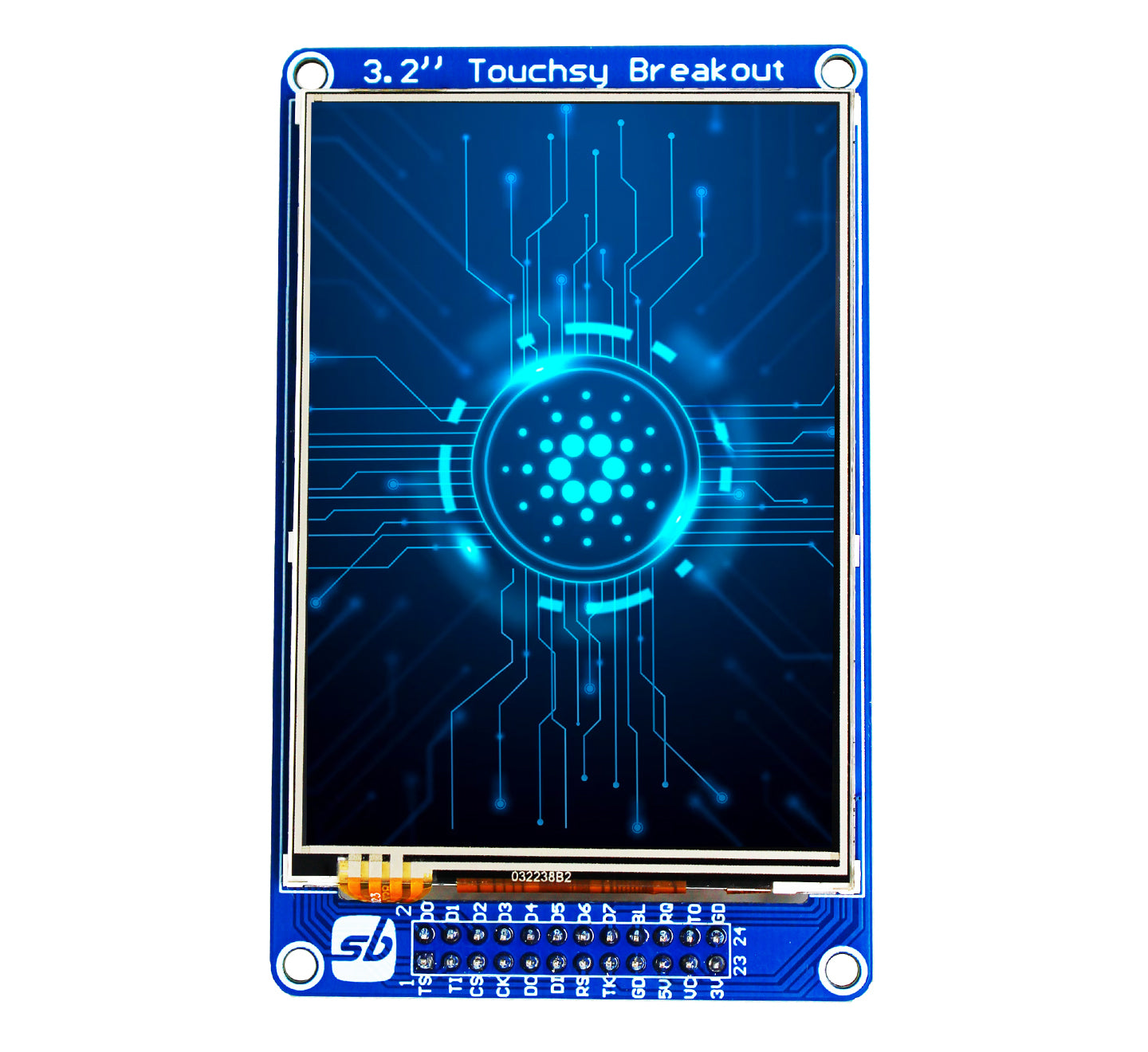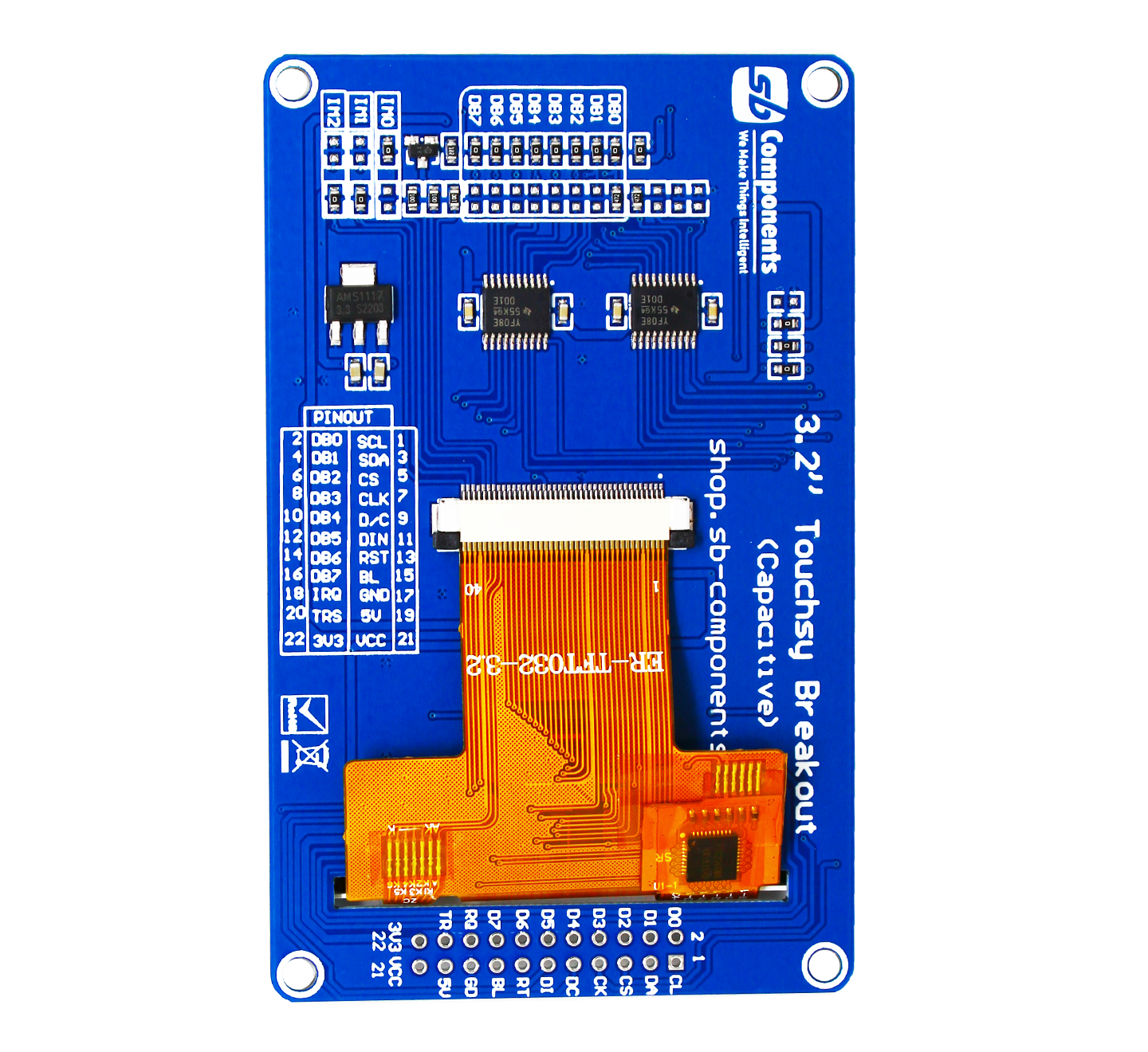Touchsy Breakout - the perfect display solution for users who prefer to use their favorite Arduino UNO/Mega/Nano or any other controllers. Here also you have the choice between resistive and capacitive touchscreens to suit your specific requirements.

With Touchsy Breakout, you can easily program your display with the Arduino IDE and use it in various projects and applications, from DIY electronics to robotics. The level shifter ensures compatibility with various hardware options, and the support for both 3.3V and 5V makes it versatile and flexible.
Both SPI and Parallel data pins are available on this Breakout. So you get the flexibility of interfacing either SPI or 8-bit Parallel mode for faster operation.
Here are the features and specifications that make Touchsy Breakout a unique and must-have accessory:
Features:
- Perfect for Arduino community with 3/4 wire SPI interface, 8-bit parallel interface
- The level shifter for compatibility with various hardware options
- Supports both 3.3V and 5V, making it versatile and flexible
- Compatibility: Arduino or other controllers
- Connectivity: 3/4 wire SPI interface, 8-bit parallel interface
Specifications:
- 2” Display with resolution 240 × 320
- Operating voltage of pins compatible for both 3.3V and 5V
- ILI934 Display Driver
- FT6236 capacitive touch controller (Capacitive Variant)
- XPT2046 resistive touch controller (Resistive Variant)
- Appearance: RGB
- Colors: 65K/262K
- Viewing Angle(in degree): Left:70, Right:70, Up:50, Down:70
- The operating temperature is -20℃~70℃
- Storage Temperature is -30℃~80℃
Pinout:

- Display pins breakout
- 3.2” touch display
Dimension:

Applications:
- DIY Electronics Projects
- Home Automation & Robotics projects
- Arduino and Raspberry Pi Projects
- Prototyping and Testing
- Data Visualization
- Integrate with Lab Instruments and Measurement Devices
- Internet of Things (IoT) projects
- Educational Projects
Resources:
For Capacitive:Software GitHub: Getting started guide, Demo example codes, etc.
Hardware GitHub: Hardware design, Schematic, Step file, 3D file, etc.
For Resistive:
Software GitHub: Getting started guide, Demo example codes, etc.
Hardware GitHub: Hardware design, Schematic, Step file, 3D file, etc.









